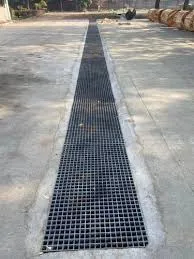
-
 Afrikaans
Afrikaans -
 Albanian
Albanian -
 Amharic
Amharic -
 Arabic
Arabic -
 Armenian
Armenian -
 Azerbaijani
Azerbaijani -
 Basque
Basque -
 Belarusian
Belarusian -
 Bengali
Bengali -
 Bosnian
Bosnian -
 Bulgarian
Bulgarian -
 Catalan
Catalan -
 Cebuano
Cebuano -
 China
China -
 China (Taiwan)
China (Taiwan) -
 Corsican
Corsican -
 Croatian
Croatian -
 Czech
Czech -
 Danish
Danish -
 Dutch
Dutch -
 English
English -
 Esperanto
Esperanto -
 Estonian
Estonian -
 Finnish
Finnish -
 French
French -
 Frisian
Frisian -
 Galician
Galician -
 Georgian
Georgian -
 German
German -
 Greek
Greek -
 Gujarati
Gujarati -
 Haitian Creole
Haitian Creole -
 hausa
hausa -
 hawaiian
hawaiian -
 Hebrew
Hebrew -
 Hindi
Hindi -
 Miao
Miao -
 Hungarian
Hungarian -
 Icelandic
Icelandic -
 igbo
igbo -
 Indonesian
Indonesian -
 irish
irish -
 Italian
Italian -
 Japanese
Japanese -
 Javanese
Javanese -
 Kannada
Kannada -
 kazakh
kazakh -
 Khmer
Khmer -
 Rwandese
Rwandese -
 Korean
Korean -
 Kurdish
Kurdish -
 Kyrgyz
Kyrgyz -
 Lao
Lao -
 Latin
Latin -
 Latvian
Latvian -
 Lithuanian
Lithuanian -
 Luxembourgish
Luxembourgish -
 Macedonian
Macedonian -
 Malgashi
Malgashi -
 Malay
Malay -
 Malayalam
Malayalam -
 Maltese
Maltese -
 Maori
Maori -
 Marathi
Marathi -
 Mongolian
Mongolian -
 Myanmar
Myanmar -
 Nepali
Nepali -
 Norwegian
Norwegian -
 Norwegian
Norwegian -
 Occitan
Occitan -
 Pashto
Pashto -
 Persian
Persian -
 Polish
Polish -
 Portuguese
Portuguese -
 Punjabi
Punjabi -
 Romanian
Romanian -
 Russian
Russian -
 Samoan
Samoan -
 Scottish Gaelic
Scottish Gaelic -
 Serbian
Serbian -
 Sesotho
Sesotho -
 Shona
Shona -
 Sindhi
Sindhi -
 Sinhala
Sinhala -
 Slovak
Slovak -
 Slovenian
Slovenian -
 Somali
Somali -
 Spanish
Spanish -
 Sundanese
Sundanese -
 Swahili
Swahili -
 Swedish
Swedish -
 Tagalog
Tagalog -
 Tajik
Tajik -
 Tamil
Tamil -
 Tatar
Tatar -
 Telugu
Telugu -
 Thai
Thai -
 Turkish
Turkish -
 Turkmen
Turkmen -
 Ukrainian
Ukrainian -
 Urdu
Urdu -
 Uighur
Uighur -
 Uzbek
Uzbek -
 Vietnamese
Vietnamese -
 Welsh
Welsh -
 Bantu
Bantu -
 Yiddish
Yiddish -
 Yoruba
Yoruba -
 Zulu
Zulu
grp cover
Understanding GRP Cover An Overview
In the realm of modern material science and construction, Glass Reinforced Plastic (GRP) has emerged as a preferred choice for a myriad of applications. GRP covers, in particular, have gained prominence due to their versatility, durability, and resistance to environmental stressors. This article delves into the fundamental aspects of GRP cover, its benefits, applications, and the reasons behind its increasing popularity in various industries.
What is GRP?
Glass Reinforced Plastic, often referred to as fiberglass, is a composite material made of a polymer matrix reinforced with glass fibers. The combination of these two materials lends GRP its unique properties it is lightweight yet incredibly strong, corrosion-resistant, and thermally stable. These characteristics make GRP an ideal material for applications that require robustness coupled with ease of handling.
Benefits of GRP Covers
1. Durability One of the most significant advantages of GRP covers is their durability. They are resistant to fading, rotting, and corrosion, making them suitable for outdoor applications where exposure to harsh weather conditions is a concern. Unlike traditional materials such as metal or wood, GRP does not suffer from rust or decay, ensuring longevity.
2. Lightweight GRP covers are considerably lighter than their metal or concrete counterparts. This property not only facilitates easier handling and installation but also reduces the overall weight burden on structures, thereby improving efficiency in construction.
3. Customizable GRP can be molded into a variety of shapes and sizes, allowing for greater design flexibility. Whether it’s for a unique architectural feature or standard utility covers, GRP can be tailored to meet specific design requirements, making it a favored choice among architects and builders alike.
grp cover

4. Thermal and Electrical Insulation GRP covers provide excellent thermal and electrical insulation. This characteristic makes them ideal for applications in environments where temperature fluctuations or electrical insulation is critical, such as in telecommunications or power generation industries.
5. Low Maintenance The non-porous surface of GRP significantly reduces the need for ongoing maintenance. Unlike wood or metal that require regular coatings or treatments, GRP covers can be cleaned easily and demand less upkeep over time.
Applications of GRP Covers
GRP covers find utility across various sectors. They are widely used in the construction industry for things like trench covers, manhole covers, and access lids. In the transportation sector, they are used for lightweight vehicle components. Additionally, industries such as wastewater treatment facilities and chemical plants utilize GRP for its corrosion resistance, ensuring safety and operational efficiency.
Growing Popularity and Future Prospects
The growing awareness of sustainability and the need for materials that can withstand the rigors of environmental exposure have propelled the popularity of GRP covers. As industries seek to reduce their carbon footprint and embrace eco-friendly materials, GRP stands out not just for its durability but also for its recyclability. This positions it well in the market as a sustainable alternative to traditional building materials.
In conclusion, GRP covers are revolutionizing the way we approach construction and manufacturing processes. With their remarkable properties and expanding range of applications, it is evident that GRP is well on its way to becoming a staple material in various industries. Whether for housing structures, transportation vehicles, or industrial applications, the future looks promising for GRP covers, making them a key player in material innovation.
Latest news
-
Exploring the Benefits of Top Hammer Drifter Rods for Enhanced Drilling PerformanceNewsJun.10,2025
-
High-Precision Fiberglass Winding Machine for GRP/FRP Pipe Production – Reliable & Efficient SolutionsNewsJun.10,2025
-
FRP Pipes & Fittings for Shipbuilding - Corrosion-Resistant & LightweightNewsJun.09,2025
-
Premium FRP Flooring Solutions Durable & Slip-ResistantNewsJun.09,2025
-
Premium Fiberglass Rectangular Tanks Durable & Lightweight SolutionNewsJun.09,2025
-
Tapered Drill String Design Guide Durable Performance & UsesNewsJun.09,2025









